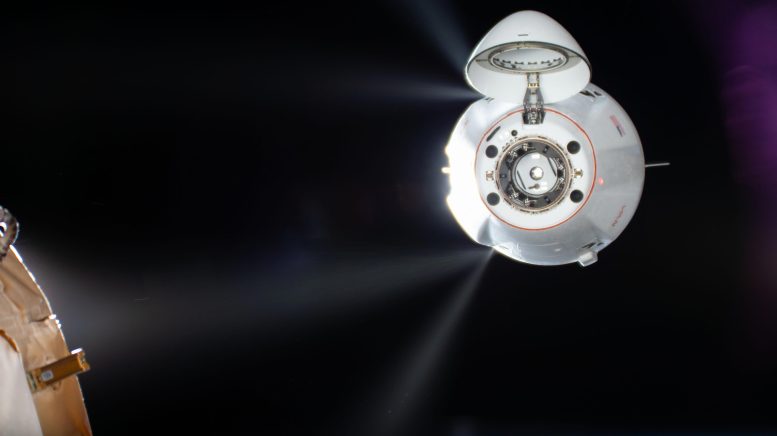
Thrusters on the SpaceX Dragon cargo spacecraft fire automatically while adjusting the vehicle’s slow, methodical approach toward the International Space Station for a docking to the Harmony module’s forward port. Credit: NASA
The Expedition 70 crew and robotics controllers on the ground were busy unloading a U.S. cargo craft on Tuesday, November 14. The International Space Station (ISS) residents are also activating new science experiments to reveal how microgravity affects humans.
Unpacking and Research Activities
The astronauts and teams on the ground are working together today unpacking some of the nearly 6,500 pounds of science, supplies, and hardware delivered inside the SpaceX Dragon cargo spacecraft on Saturday. Commander Andreas Mogensen worked inside the commercial resupply ship on Tuesday disassembling some of the loaded crew bags strapped inside Dragon. The ESA (European Space Agency) astronaut then moved the smaller cargo items through the hatch and into the station to replenish the crew. Mogensen also supported a pair of space botany experiments to help sustain crews traveling farther away from Earth.
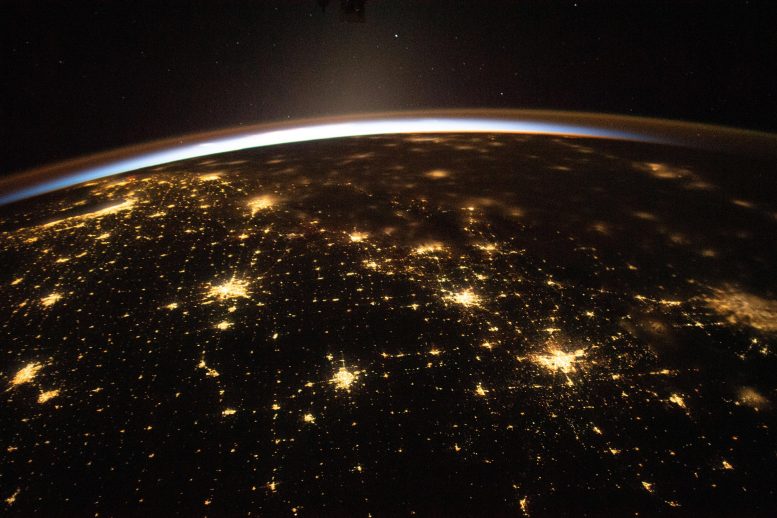
The sun’s first rays begin illuminating Earth’s atmosphere in this photograph from the International Space Station as it orbited 260 miles above the central United States. At far left, the city lights of Chicago, Illinois, are outlined by Lake Michigan. At far right, the city lights of the Dallas/Forth Worth metropolitan area shine through the clouds. Credit: NASA
Robotics and Hardware Installation
Mission controllers from the U.S. and Japan coordinated their robotics activities to retrieve and install some of the heavier science hardware delivered inside Dragon’s unpressurized trunk. The U.S. engineers remotely controlled the Canadarm2 robotic arm to extract the new ILLUMA-T laser communications experiment stowed in Dragon. The JAXA (Japan Aerospace Exploration Agency) robotics controllers were standing by as the Canadarm2 handed off ILLUMA-T to the Japanese robotic arm for installation on the Kibo laboratory module.
Aging Studies and Cell Research
NASA Flight Engineer Loral O’Hara worked throughout Tuesday on a new investigation for a deeper understanding of the aging process. She processed human cell samples for incubation and stowage in a science freezer. The cell samples are being cultured in space and compared to samples on Earth to observe cell stress, metabolism, and other characteristics that may contribute to accelerated aging processes in humans living on and off the Earth.
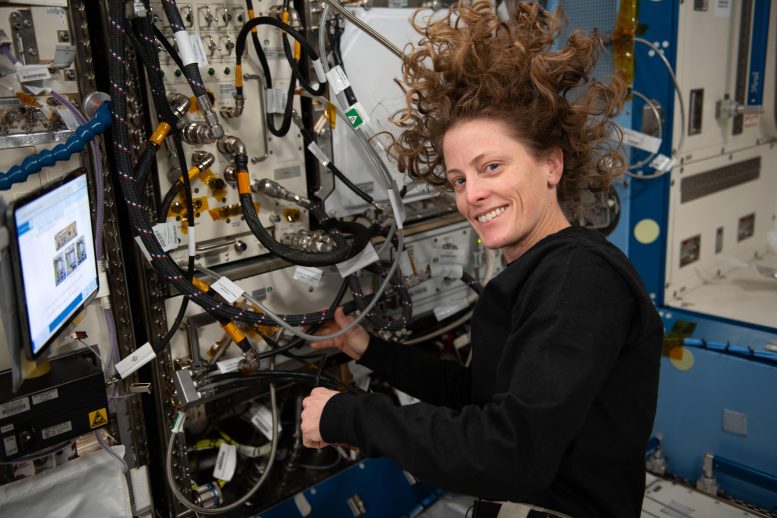
NASA astronaut and Expedition 70 Flight Engineer Loral O’Hara replaces hardware inside the Plant Habitat facility to prep for future experiments investigating genetic responses and immune system function of tomatoes in microgravity. Credit: NASA
Collaborative Experiments
Astronauts Jasmin Moghbeli and Satoshi Furukawa partnered together treating cell samples inside the Kibo lab for the Cell Gravisensing-2 study. The duo retrieved samples from an incubator, observed them in a microscope, and then inserted them into a science freezer for later analysis. Observations will help researchers learn how cells respond to the lack of gravity promoting space biology and improving treatments for ailments on Earth.
Technology and Maintenance Tasks
Moghbeli from NASA also installed computer gear inside the Combustion Integrated Rack that enables the safe research of fuels and flames in weightlessness. Furukawa from JAXA routed cables and set up a laptop computer that will support operations for the ILLUMA-T laser technology study.
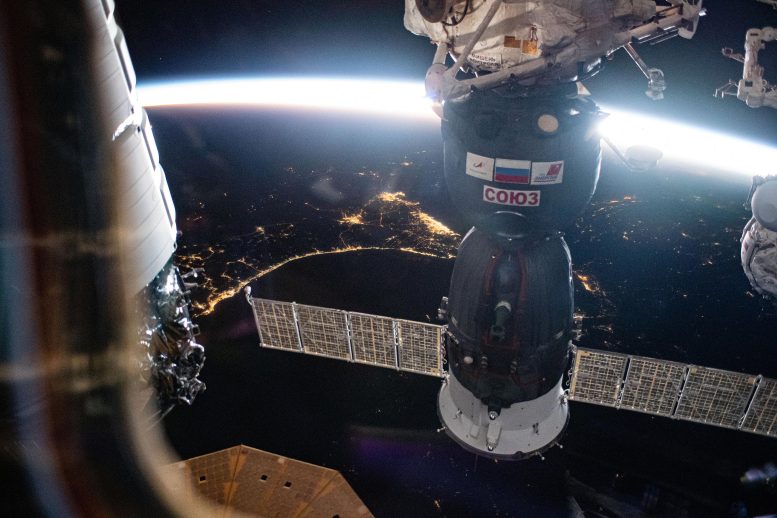
The Soyuz MS-24 crew ship is featured prominently in this photograph from the International Space Station as it soared into an orbital sunrise 259 miles above the Iran-Pakistan border. The city lights below highlight the United Arab Emirates on the Persian Gulf and Oman on the Gulf of Oman. Credit: NASA
Cosmonauts’ Research and Maintenance
The orbiting lab’s three cosmonauts spent Tuesday focusing on their array of research and maintenance tasks for Roscosmos. Cosmonaut and five-time station visitor Oleg Kononenko inspected the Zvezda service module with inputs from specialists on the ground. Flight Engineer Nikolai Chub photographed the internal condition of the station’s Roscosmos modules for analysis then strapped on a sensor-packed cap and practiced futuristic piloting techniques. Finally, Flight Engineer Konstantin worked on orbital plumbing tasks, updated computer tablet software, and photographed landmarks on Earth for study.


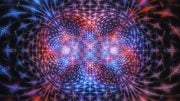


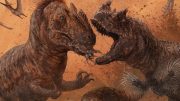
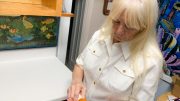

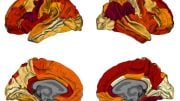
Be the first to comment on "Dragon’s Arrival Spurs Robotics and Science Frenzy Aboard ISS"